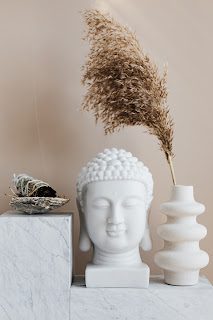Sage Plant
Naturalized in many places in the world, it is one of the oldest and most popular plants in the plant kingdom and at the same time the second most common plant on earth. It is also called "green plant," "violet flower" or "pink flower" or even "blue-green" because of its violet flowers.
In the kitchen, sage has an aggressive, pungent aroma and aroma that is often described as camphor - similar and musty. Sage is an herbaceous perennial herb that is easy to grow in most sunny gardens. It has a sweet, sweet - sweet taste with a spicy, earthy, spicy and spicy aroma and a strong, bitter - bitter taste.
Sage can be mixed with cheese or cottage cheese to make sandwiches and spreads, and it can also be used in dishes containing pork, cheese and beans.
Sage is woody - perennial and grows in zones 4 - 8, but can also be harvested in milder climates. Sage is also harvested as an alternative to other mild-climatic herbs such as thyme, mint and chives.
In modern times, it is often used in ornamental gardens, but there are also many attractive sage varieties with purple, colorful or tricolor leaves. Garden sage (Salvia officinalis) has a silvery green colour and tastes good for cooking.
Sage is a woody subshrub native to the Mediterranean and has spread throughout the world. Like most Mediterranean herbs, it prefers a well-drained, not too nutritious soil.
The most common sage cultivated for culinary purposes, the so-called garden sage, grows to a height of 2 - 3 inches. Sage (Salvia officinali) can be grown in different climates such as the Mediterranean, North America, Europe, Asia and Africa.
The blue flowers appear in midsummer, and the fragrant leaves are at their peak
just before the blossoms appear. The herb grows 30 cm high and wide and grows as a perennial soil plant or in a pot.Sage is a perennial shrub in the family of Lamiaceae that forms aromatic leaves that are used as herbs. Sage has woody stems with broad, elliptical, silvery-green leaves that are alternately arranged on the stem. It can stand upright or grow above the ground and has a wide variety of species, such as Common Sage (L. elegans). Sage plants tend to bloom when they reach their full size, although cutting off the stems keeps the plant compact and provides a good source of cooking herbs.
Sage plants generally grow up to 1.5 meters high and generally live until they are 15-20 years old. They are replaced every 5 years when they become woody.
Scarlet sage is an annual that really thrives in full sun and can withstand partial
shade as long as it is planted in well-drained soil. In the garden, sage, the purple sage shrub, blooms, but not very often, and it is also used for cooking. Pineapple sage grows primarily as an ornamental, but is also appreciated as a medicinal plant.It has the ability to produce beautiful scarlet flowers in late spring after the first frost of the year and in autumn and winter.
Sage also produces masses of violet and blue flowers in summer, which provide attractive gray-green foliage. Sage also thrives well with spotted sage, although the taste is not as strong and prefers warm, sheltered locations in full sun.
Berggarten produces large, round, greyish-green leaves that are more spicy than ordinary sage. The foliage tends to be as aromatic as both species and can be used for cooking. Sage leaves account for about a third of the total amount of sage in the US and can cause headaches, nausea, vomiting and diarrhoea.
Salvia officinali, or Icterina, is a colorful alternative to sage and can be grown in a
variety of climates, from tropical and subtropical to temperate and tropical. Get a 3x8-foot border with leaves in purple, green, and gold hues, including colorful leaves. Make sure your kitchen is stocked with fresh herbs with this classic herb garden plan where you are surrounded by ten of their species.If you decide to grow this magnificent mint indoors, plant several seeds in a five or six inch pot. Use plastic containers because they retain moisture longer than clay pots, and since sage plants are evergreen perennials, such plants will last as long as they are not disturbed or destroyed, as happens when herbs grow when gardens are ploughed in spring. Firstly, sage plants that are not exposed to high temperatures or humidity (which can delay growth) will ripen quickly and produce delicate, delicately flavored leaves.
Secondly, sage will sprout in spring, with the first weeks of spring being the most important time of the year for flowering.
 Reviewed by bubfashion plus
on
June 11, 2020
Rating: 5
Reviewed by bubfashion plus
on
June 11, 2020
Rating: 5











No comments:
Thank you so much for your love and support that help me to serve you batter ,Any suggestion ,Idea and feed back would be Great
Thank very much Stay Safe Stay Healthy From COVID-19